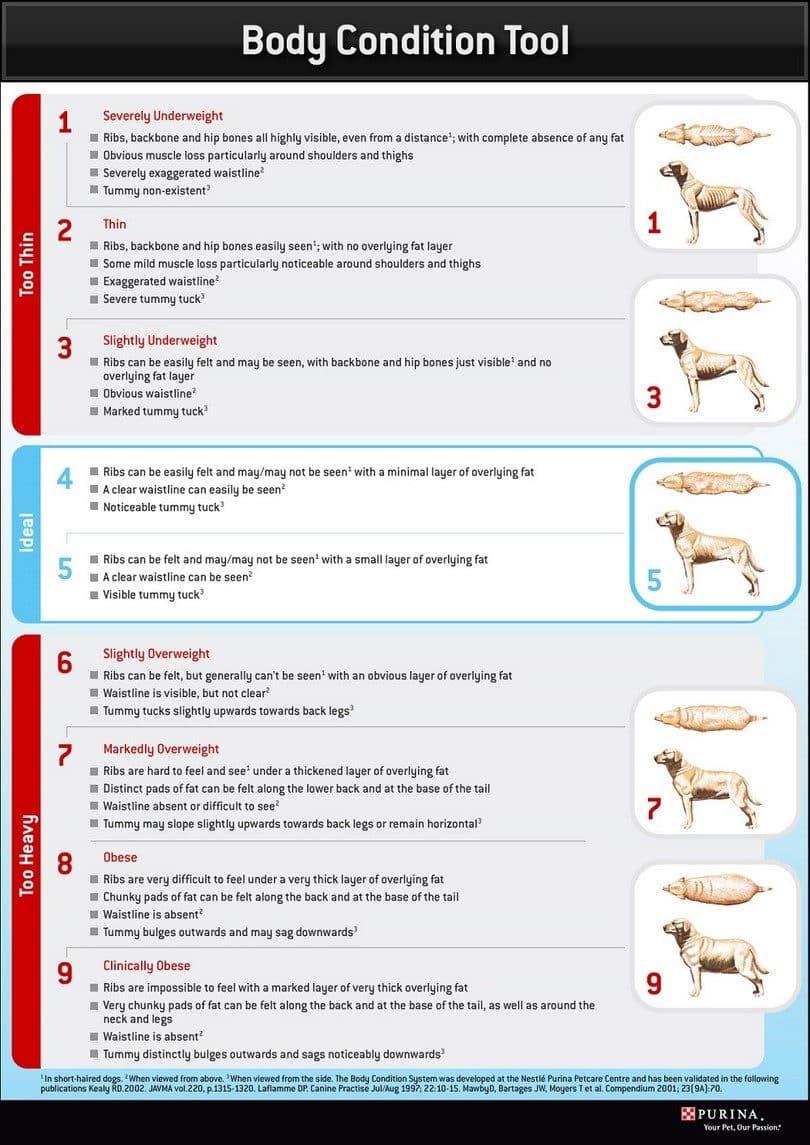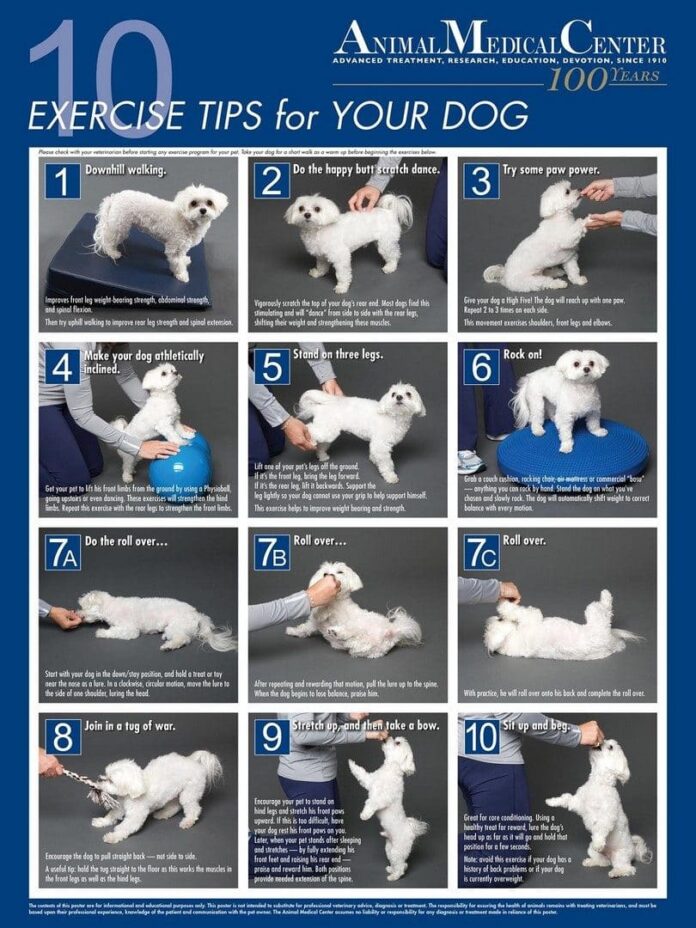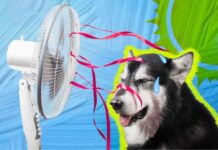Just like humans, dogs can have serious problems with obesity and that can be really life-threatening. Additionally, an overweight dog is more likely to suffer from diabetes, arthritis, heart diseases, lung disorders, high blood pressure, immune dysfunction, or cancer. If your dog is overweight, he is also more likely to die at a younger age.
The problem is that many pet owners fail to see that their beloved furry friend is obese. You should remember that your pet needs as much exercise as you, and if he is a couch potato, he will most likely become overweight. It is your responsibility to make sure that your pet is healthy and strong.
How to Tell if Your Dog is Overweight
Dog obesity is a serious problem, and as we have mentioned above, it can affect your dog in the worst way possible. There are actually some breeds that are prone to obesity more than some other dog breeds. Some of these breeds include:
| Small breeds | Medium breeds | Large breeds | Giant breeds |
| Cairn TerriersDachshunds
Scottish Terriers Cavalier King Charles Spaniels |
BeaglesCocker Spaniels
Basset Hounds |
LabsGolden Retrievers
Rottweilers |
Bernese Mountain DogsNewfoundlands
Saint Bernards |
One of the ways for determining whether your dog is overweight or not, is by feeling around his ribs and spine. If you are unable to locate the thin layer of fat that separates the skin from the bones or find the ribcage, then that means that you have got an overweight dog. You should also take a look of his collar, if it needs loosening, or if your dog has difficulty walking, then he is probably overweight.

Some of other signs include sleeping more than usual and slow movement in general. The other, more precise way is to ask your vet to evaluate the size at the next check-up. If your dog has 15% above his weight, then he is obese; if he has zero to 15%, then he is overweight. According to the studies, obesity in dogs can be found in more than 50% of the dog population in the US.
- The dog’s ribs cannot be easily felt;
- You are unable to locate the thin layer of fat that separates the skin from the bones;
- The dog has an obvious loss of waist;
- The collar needs loosening;
- The dog has difficulty walking or moving in general;
- The dog is sleeping more than usual.
Dog Obesity According to the Dog’s Habits
There are a couple of dog types that are usually encountered and that are great candidates for gaining weight:
The nibbler – this type of dog seems to hardly eat a thing and that is probably because he or she has an available bowl of food everywhere and anywhere. So the dog nibbles from time to time, and just like humans, dogs eat when they are bored too. So when the time for dinner comes, the dog just picks at the leftover and seems uninterested, because he has been eating the whole day. However, the total calorie intake after just one day is probably so huge that the dog easily gains weight even though the owner thinks he hasn’t eaten anything.

The beggar – is probably the most famous type. This dog has not been trained properly and the owner does not have a will power to tell him no. This is a huge mistake from the beginning. If you want to stop your dog from creating noise and puppy eyes 10x per day, you should start learning to ignore him and say no, because you are doing him more harm than good.
The good dog – is a type of dog that is so good and cuddly that his owner misinterprets it as that he must eat always. It seems a bit ridiculous, but there are such pet owners. The affection should not be showed by giving excessive amounts of treats. It is better if you play with your dog, cuddle him and spend more time with him than allowing him to eat whenever he wants.
The gourmet dog – this kind of dog has learned that he can eat anything he wants and this is probably the most dangerous because some pet owners give their dogs the ingredients and foods that we have mentioned above in the ‘dangerous list’. Such a dog usually refuses to eat normal dog food and finds everything else dangerous, but you should never give him such food or treats.
What Causes Dogs to Get Obese?
According to a survey realized in 2012, 45.8% of dog owners incorrectly identified their overweight or obese dogs as “normal weight” when asked by their veterinary clinic to assess their pet’s current body condition.
According to the National Pet Obesity Awareness Day Survey realized in 2014, an estimated 52.7% of dogs in the US are overweight or obese. Out of these, 17.6% are obese and 35.1% are simply overweight. The problem is that obesity in dogs is an ascending trend and numbers have definitely changed upwards in the last year.
The main causes for obesity are:
- Age – is a very possible cause for obesity in dogs, because as an adult dog ages, the lean body mass declines which results in a decrease in voluntary activity and energy. Unless you decrease proportionately the intake of food, that will lead to the weight gain.
- Neutering – results in the loss of sex hormones and that slows the pet’s metabolism and makes him eat more than usual. The food intake should be monitored and decreased.
- Certain medications – can contribute to your dog being overweight. For example, Phenobarbital and Glucocorticoids can stimulate your dog to eat more and more.
- Environment and owners – can be some of the causes for a dog being overweight. It all depends on the household income and the habits of the owner. If the owner does not exercise or does not take care of his or her health, it is very possible that the dog would be neglected too.
- Nutrition – can be a very important factor. If a dog is fed bad or dangerous food, such as snacks, cheap canine kibble, table scraps etc that can result in him being overweight. That includes the number of meals which should not be irregular.
- Medical conditions – such as diabetes, Cushing’s disease and hypothyroidism can contribute to an excessive weight gain.
What Kind of Food to Avoid
Dog’s digestive system is different than ours which is why it is of extreme importance to know what food is bad for your dog. We put together a list of foods and ingredients that do not only lead to obesity, but can be fatal.

You should avoid giving your dog, at any cost:
- High levels of carbohydrate fillers, additives and calories should be always avoided – most of kibble foods contain them.
- Avocado contains a substance called persin which is toxic to dogs.
- Alcohol – some pet owners find it amusing to give alcohol to their furry friends but the thing is that alcohol has a stronger impact on dogs’ bodies and it takes just a little amount of alcohol to cause central nervous system depression, diarrhea, vomiting, problems with coordination and many more.
- Onions and garlic can destroy your dog’s red blood cells and lead to anemia. They are very poisoning to pets.
- Coffee, tea and other caffeine can also be fatal and there is no antidote. You should be careful because caffeine can be found in cold medicines, pain killers, chocolate, stimulant drinks etc.
- Grapes and raisins can cause kidney failure even though it is still not clear why.
- Milk and dairy products in general cause diarrhea and food allergies.
- Macadamia nuts can be fatal too and cause poisoning
- Candies and gums usually contain xylitol which can cause your dog’s sugar level to drop and lead to a liver failure because this substance makes insulin to circulate faster through your pet’s body;
- Chocolate contains theobromine can cause diarrhea and abnormal heart rhythms, seizures and even death. And there are still many pet owners who treat their dogs with chocolate.
- Bones and fat trimmings are bad for dogs, simply because they can choke on them, or even worse, bones can splinter your dog’s stomach, while the fat trimmings can cause pancreatitis.
- Persimmons, peaches and plums contain seeds and pits that can cause allergies, intestinal obstruction and they also contain cyanide can both poisonous to dogs and humans.
- Raw eggs can cause your dog to get food poisoning from bacteria Salmonella or E. coli. Additionally, there is an enzyme in raw eggs that can cause skin and coat problems.
- Salt can cause excessive thirst, urination and ion poisoning. That is why you should avoid giving chips or other salty food to your dog.
- Too much sugar leads to obesity and dental problems, including diabetes.
- Yeast dough – if your dog eats yeast dough before it is baked, it would rise and swell inside, causing severe pain and lead to alcohol poisoning.
- Medicine should be not only kept out of children’s reach, but dogs’ too. Unless you have consulted your vet, giving any medicine to your dog can be fatal. It is known that dogs do not react in the same way to the ingredients.
For a helpful guide on proper dog nutrition, see our piece on this important topic.
Why It’s Bad to Overfeed Your Pet
Food doesn’t mean love and overfeeding your precious doggie can’t lead to anything good. Even if your pet looks cute and round with an extra layer of fat on his ribs you should know the risks you are exposing him to. Obesity has some very unpleasant consequences, and some of them are described below.
| Consequence | Symptoms |
| Reduced life span | Obesity is the main cause for early deaths in dogs that are overfed |
| Endocrine diseases | These, including hypothyroidism have always been considered a cause for obesity. Obesity may also have some effect on thyroid homeostasis, even though such changes are unlikely to affect the interpretation of thyroid function tests. |
| Dyslipidemia | An abnormal amount of cholesterol and/or fat in the blood |
| Orthopedic diseases | These including osteoarthritis, osteochondrosis and osteochondritis dissecans are one of the most common disorders associated with obese dogs. |
| Cardiopulmonary disease & hypertension | These can be developed in obese dogs, while the development of tracheal collapse is more usual in small-breed dogs that are overweight. |
| Other disorders | These include laryngeal paralysis, asthma, brachycephalic airway obstruction syndrome and obstruction of thoracic movement related to obesity hypoventilation syndrome (Pickwickian-type syndrome). |
| Problems with the arterial blood pressure | Research has also shown that overweight dogs without overt heart disease have preclinical left myocardial systolic and diastolic function changes. Obesity has a major impact on ventricular function in dogs. |
| Genitourinary disorders | Obese dogs are reported to suffer from an increased risk of dystocia which is likely related to excess adipose tissue in and around the birth canal. The urethral sphincter mechanism incompetence has been reported. |
| Neoplasia | Overweight dogs reportedly have an increased risk of developing transitional cell carcinoma of the bladder. |
| Other symptoms | Exercise intolerance, heat Intolerance, increased anesthetic risk, mammary neoplasia, hyperlipidemia. |
Prevention: the Best Way to a Normal Life
Depending on your dog’s age and activity level, you should not only pay attention to him eating less, but you should also take care of what kind of food he eats. Just like with humans, starving yourself will bring you more harm than good.
But taking care of the calories and exercising at the same time will bring you to the result you need. You can use a Dog Food Calculator (an app found online) in order to help you to determine your dog’s ideal weight.

You should never allow your dog to feed 24 hours a day – or allow him to eat whatever he wants. The dog cannot decide what is healthy or not, it should be up to you to decide what meals are the best for him and when he should eat them.
Every dog breed usually requires two to four small portions per day. If you are unable to feed your dog in such a way (because of your work, schedule etc.) then you can purchase a timed automatic feeder that will make your life easier. Our piece on the right amount of food to feed your furball will be a great help to you, so check it out.
The usual kibble foods that can be found on the market have various labels, but you should be careful, because they contain high level of carbohydrate fillers and calories, which make your dog to feel full, but only for a short period of time.
That is why you should be careful when buying food and you should always read the ingredients and measure the calories. Never guess or be deceived by the descriptions such as ‘diet’ or ‘reduced calories’. Here’s a guide on the best dog food to feed your pet that we’ve written to help you with more options.
If you want to feed your dog with food of high quality, you should look for the food that contains above-average protein, below-average fat and below-average calories. A higher amount of proteins will make your dog feel more satisfied and you won’t have problems with unwelcome side effects such as a muscle loss. Canned food is also better than kibble because these canned products contain higher levels of proteins, lower carbohydrates and fewer calories.
However, the home-cooked food or raw diet is the healthiest choice out there. And you should never forget to exercise and exercise. Never make your dog stay the whole day in one place. Lean cuts of cooker or raw meat are always welcome. And when it comes to fruits, apples, oranges, bananas, and watermelon are great, but you must remove any seeds, stems and leaves first.
Carrot sticks, green beans, cucumber slices, zucchini slices or baked potatoes make for great vegetables in your dog’s eating schedule. Dogs can also eat cooked white rice and pasta. You can even learn how to make your own dog food, so read our article on the subject for more healthy treats.

Do not forget to measure your dog on a weekly or monthly basis and to provide him with fresh water all the time. What is even more important is to exercise your dog properly. It will improve his muscle tone, metabolism and of course and it will keep his weight even. If you develop an exercise routine, that would improve the dog’s overall health and you will feel better too, because you will be able to exercise too and bond with your pet.
However, not all dog breeds are able to perform any types and intensities of exercises. It is simply is not in their nature.
Do not forget to buy a canine scale and make a chart. You will be able to monitor your pet’s health by yourself, so you can consult the vet if you notice anything extraordinary. You can do it on a weekly and monthly basis and also consult your vet. Forget about the free choice, which means to leave the bowl of food everywhere and anywhere.
In Conclusion
To sum up, it is your responsibility to take care of your dog’s eating habits and monitor his health. We mentioned some of the signs and solutions in this article and we also provided you with a list of the most dangerous foods out there that can not only lead to obesity, but be fatal too.

The most important thing is to consult the vet and rule out any possible conditions that may be causing your pet to gain weight even if he is moving a lot and eating normally and exercising daily.
However, if he is healthy, then it is important to prevent excessive eating and weight gaining. Your dog can only depend and rely on you to take care of his health because dogs cannot distinguish between healthy and dangerous food and they cannot take themselves out for walks and exercises.




